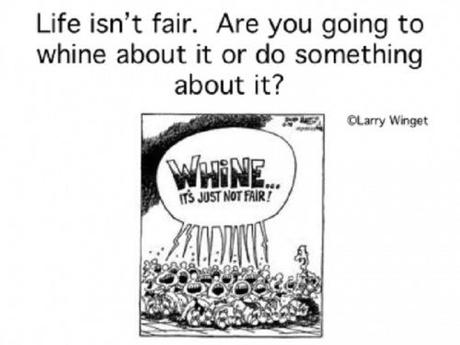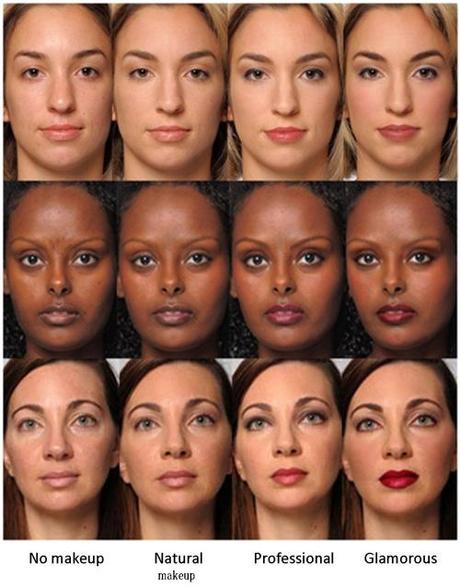 We all know life isn’t fair.
We all know life isn’t fair.
We all know that good-looking people get all sorts of advantages simply because of their looks. But higher pay, too?
Aaron Gouveia writes for Salary.com that multiple studies show that the amount someone is paid — and in some cases whether or not they get the job — is based, at least in part, on how they look.
Below are 7 ways your looks can affect your pay.
7. Height
Tall people get paid more money — and it’s not just on a basketball court. A 2004 study by Timothy Judge at the University of Florida found that for every inch of height, a tall worker can expect to earn an extra $789 per year. That means two equally skilled coworkers would have a pay differential of nearly $5,000 per year, simply because of a 6-inch height differential.
But the pay differential isn’t just due to prejudice against short people. A 2006 study by Princeton economists Anne Case and Christina Paxson indicates there could be a good reason for the pay gap — tall people are smarter. Taller children score better on tests even before formal schooling begins, according to the study, and the tall adults go on to take higher-paying jobs that require greater intelligence.
6. Weight
A George Washington University study, citing data from the National Longitudinal Survey of Youth in 2004, found that obese workers (those who have a Body Mass Index of more than 30) are paid less than normal-weight coworkers at a rate of $8,666 a year for obese women, and $4,772 a year for obese men. Other studies indicate obese women are even more likely to be discriminated against when it comes to pay, hiring and raises.
A study reported in the International Journal of Obesity described an experiment in which people were shown pictures of job applicants, as well as resumes, and asked to score them on suitability, starting salary, and employability. What the test subjects didn’t realize, however, is the pictures they were being shown were actually of the same person, but before and after bariatric (stomach stapling) weight loss surgery. Overwhelmingly, the thinner candidates were chosen for the job and with higher starting salaries than the heavier applicants.
5. Hair Color
Not only do blondes have more fun, it turns out they also have more in their paychecks.
A 2010 study from the Queensland University of Technology studied 13,000 Caucasian women and found blondes earn more than 7% more than female employees with any other hair color — a pay bump is equivalent to the boost an employee would generally see from one entire year of additional education. The study also found blonde women tend to marry rich — men who earn an average of 6% more than husbands of women with other hair colors.
4. Physique
According to a study by Cleveland State University in the Journal of Labor Research, workers who exercise regularly earn 9% more on average than employees who don’t work out. People who exercise three or more times a week earn an average of $80 a week more than their couch-potato coworkers. Even those who work out just one to three times a week see a slight earning advantage over their sedentary peers, making slightly more than 5% in additional pay.
3. Make-up
Not only are women who wear make-up (a moderate amount instead of overly made-up) judged to be more attractive, they also rank higher in competence and trustworthiness, according to a study funded by Procter & Gamble, Massachusetts General Hospital, Harvard Medical School, Boston University, and the Dana-Farber Cancer Institute. A study in the American Economic Review said women who wear make-up can earn more than 30% more in pay than non make-up wearing workers. A study in the London Times also found that 64% of directors said that women who wore make-up looked more professional.
2. General Attractiveness
A study by Yale University’s Daniel Hamermesh found that if people think you’re good-looking, they’ll pay you more money. The beautiful workers earn an average of roughly 5% more, while unattractive employees can miss out on up to almost 9%. Furthermore, while effects for men are at least as great as for women, there’s a double whammy for unattractive women: Not only do they have lower labor-force participation rates, unattractive women also tend to marry men with less human capital.
1. Being “Too Pretty”
Everything in moderation — including looks!
That saying “Don’t hate me because I’m beautiful” has truth in it. Although attractive people make out when it comes to salary and hiring, and although being exceedingly attractive doesn’t seem to hurt men, according to a 2010 study that appeared in the Journal of Social Psychology, women rated as very attractive face discrimination when applying to “masculine” or professional jobs.
In an experiment that was part of a Newsweek survey of more than 200 hiring managers, people were given a list of jobs and 110 photos of candidates (split evenly between men and women). When test subjects were asked to rank suitability for each job, the men were overwhelmingly given preference for jobs such as director of security, manager of research and development, director of finance, mechanical engineer and construction supervisor. The women were relegated to more traditional (and lower-paying) female roles such as receptionist, proving beauty can be a beast at times.

Most of the above 7 attributes are associated with overall health:
- Height: Shortness can be due to malnutrition in the womb and in childhood. Thus, we unconsciously favor taller people.
- Weight: Obesity (not just being 5-10 lbs. over-weight) is a sign of poor health. Indeed, we have statistical data that fat workers take more sick days from work.
- Physique: People who regularly exercise are more physically fit and healthier, not to mention sickly people tend not to or are unable to exercise.
- Make-up: See the pictures of women with and without make-up (above)? They show that a moderate amount of make-up makes a woman appears healthier — with an even (instead of splotchy) skin tone; a glowing (instead of sallow) complexion; rosy cheeks; and bigger brighter eyes, etc.
- General attractiveness: Studies have shown that humans across cultures view faces that are symmetrical as more attractive. Scientists believe it’s our instinctive natural selection at work because a lop-sided or asymmetrical face can be an indicator of disease.
As for the remaining two attributes — being blonde and being too pretty — they seem to be culturally learned prejudices, instead of health-related. Or is it?
Daniel Hamermesh writes in his new book, Beauty Pays, that pretty people tend to be more immoral. Studies found that prettier people borrow money more easily, get lower interest rates on their loans, but are more likely to later default on the loan. This suggests there may be a moral dimension to the prejudice against exceedingly attractive women.
That said, we’re still left with coming up with a rational explanation for why blondes get higher pay. LOL
A final word of caution:
The studies cited above are generalizations about groups — tall vs. short, fat vs. thin, attractive vs. ugly — instead of about any particular individual. While taller, thinner, fitter, prettier people tend to get higher pay, that doesn’t mean every tall, thin, fit, attractive person is better paid. Nor does it mean that being short, fat, flabby, or homely consigns a person to a low salary.
While good looks might work to someone’s advantage initially, looks alone are not enough. In the end, hard work, character and talent will be the difference-maker. Just remember the Aesop’s fable about the hare and the tortoise.

And if you are turned away because of your looks, chances are you’ll be better for it. Who wants to work for an employer or organization so shallow that they value physical appearance over job performance?
~Eowyn

